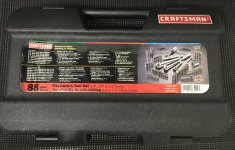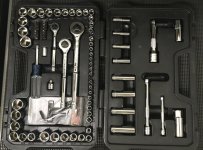Kevin L (NKY)
TVWBB Diamond Member
Yes Phillips are soft at the center and even more so with stainless ones. There have been a few very good improvements , square drive, Roberson, to name a few, and many others that did not go well, coin slot(high torques) ,Tork , a English screw used on the Hawker aircraft using offset Phillip type blades.I saw a video on YouTube from the "History Guy" that talked about the evolution of screws. The Robertson screw seemed like a much better option than Phillips head screws but never took off here. I hate Phillips screws, they strip far too easy
Most important equal presure, and a good bit no wear shown. And change often if you are installing a couple hundred at a time.


